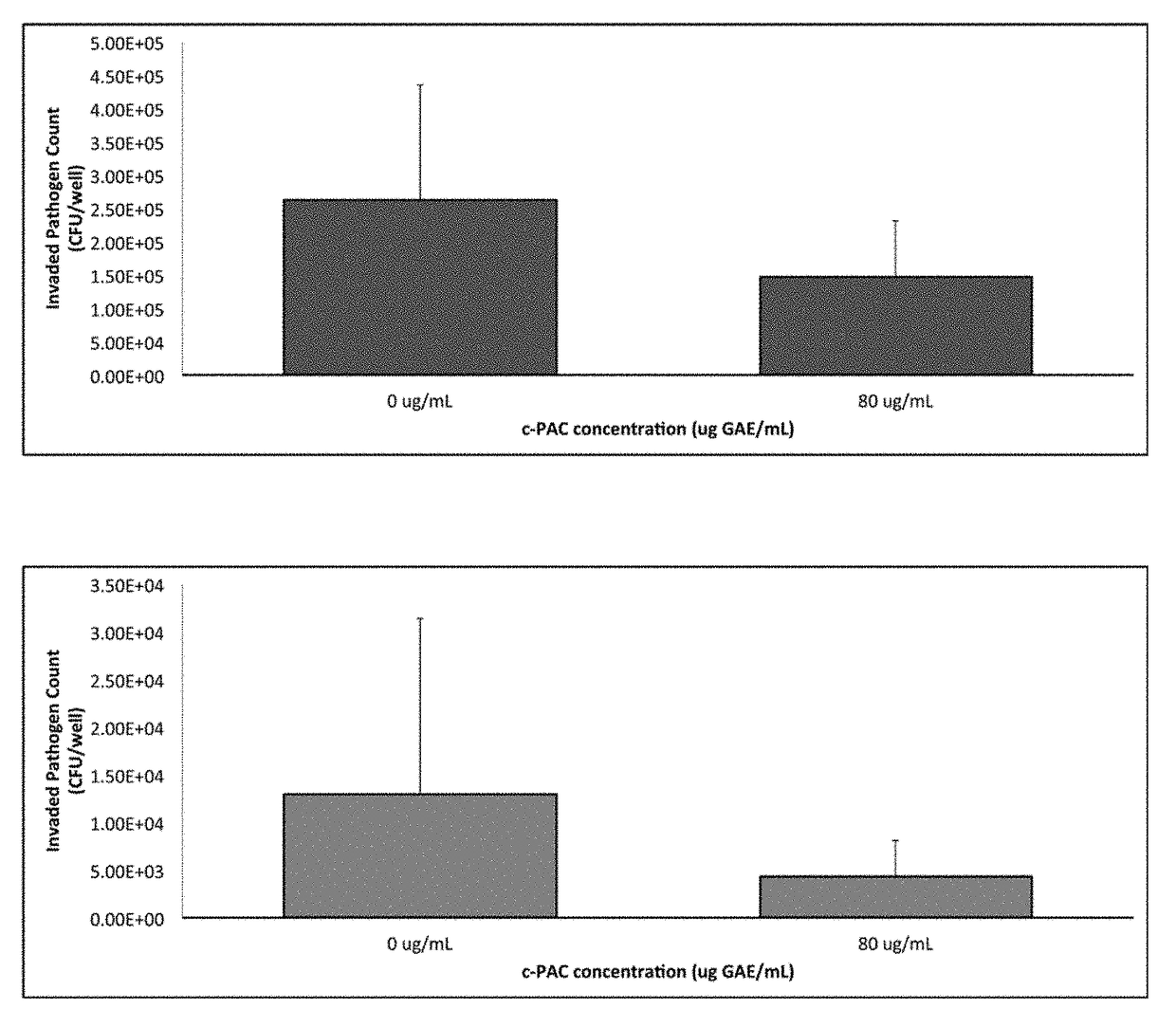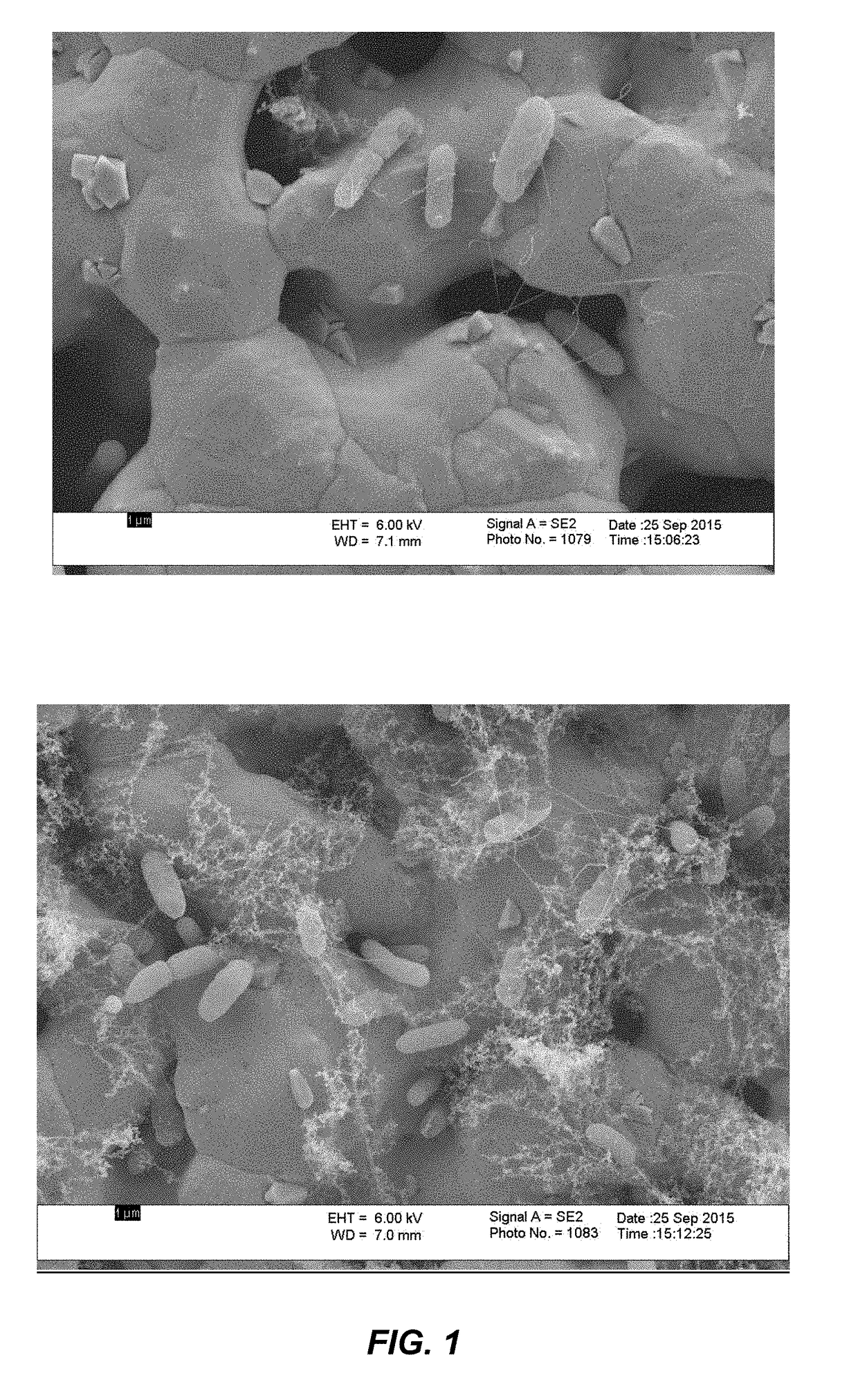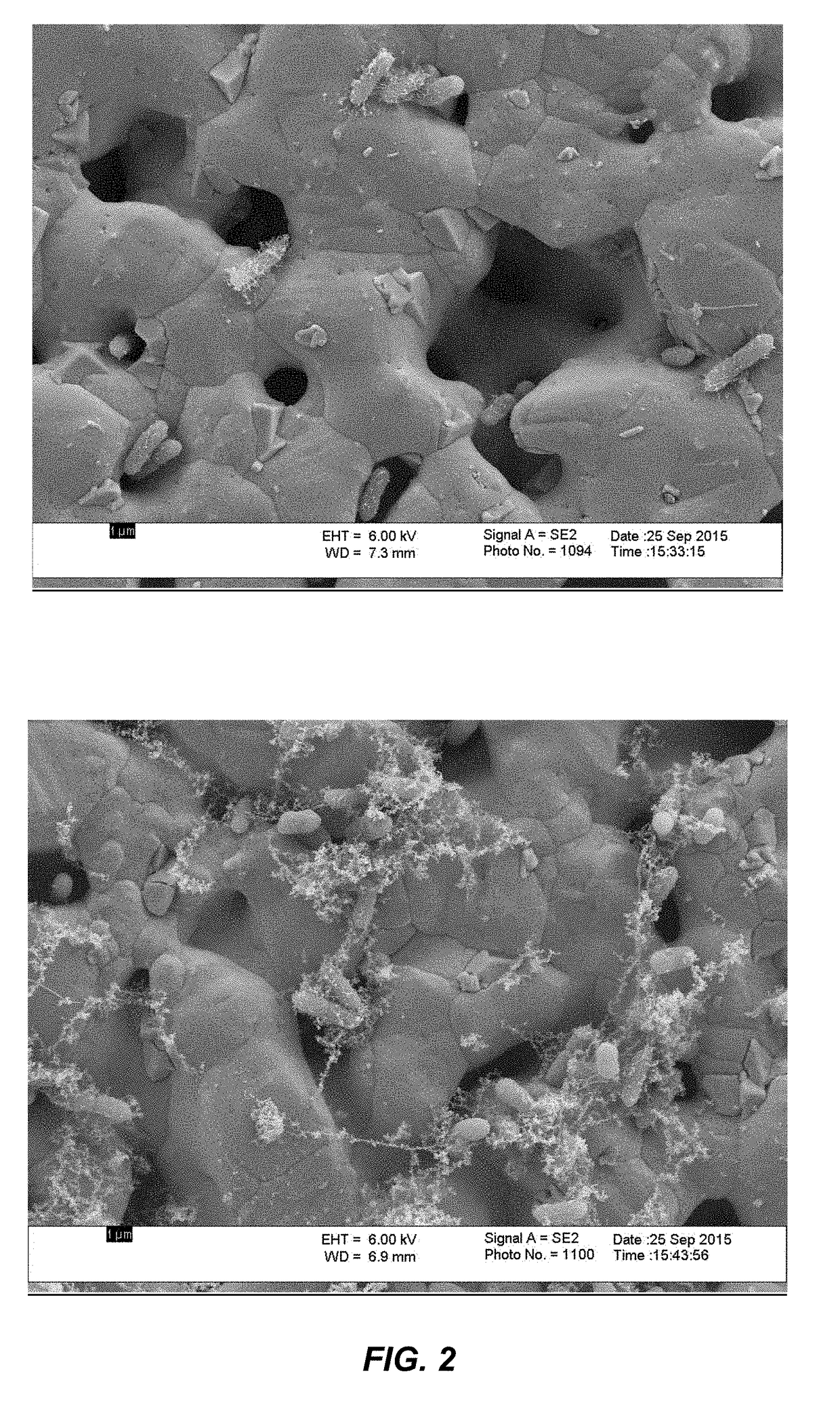Medicinal composition for treating urinary tract infection (UTI)
a technology for urinary tract infections and medicine compositions, applied in the direction of drug compositions, antibacterial agents, organic chemistry, etc., can solve the problems of low abdominal discomfort, life-threatening, and the utis can progress to serious illness
- Summary
- Abstract
- Description
- Claims
- Application Information
AI Technical Summary
Benefits of technology
Problems solved by technology
Method used
Image
Examples
example 1
Scanning Electron Microscopy
[0130]Pathogenic E. coli strains (5011 and CFT073 wild type) were prepared for scanning electron microscopy according to the following protocol. 24 hour cultures (top 10% volume media) of each strain were mixed with either a cranberry proanthocyanidin (c-PAC) formulation (80 μg gallic acid equivalents[GAE] / mL) or control solution and allowed to incubate for ˜15 minutes at 37° C. The C-PAC formulation (herein merely “c-PAC”) is a purified cranberry extract comprising a range of oligomeric PACs, which is at least substantially free of monomeric tannin base units (also sometimes known as “monomeric tannins”) i.e. comprising less than 1% w / w of such base units (see e.g. Feliciano et al. Comparison of isolated cranberry (Vaccinium macrocarpon Ait.) proanthocyanidins to catechin and procyanidins A2 and B2 for use as standards in the 4-(dimethylamino)cinnamaldehyde assay. Journal of agricultural and food chemistry 2012; 60(18): 4578-4585). Solution containing ba...
example 2
Agglutination Studies
[0133]Pathogenic E. coli strains (5011 and CFT073 wild type) were cultured from frozen stock under static conditions in LB broth at 37° C. and washed 2× with PBS++ by centrifugation at 1800×g for 10 minutes. The OD450 was used to calculate and adjust the bacterial cell density using a previously established bacterial density-absorbance curve.
[0134]The agglutination assay was conducted in 3.0 mL microcuvettes using 1.0 mL total reaction volume. First, pathogenic E. coli stock solutions (50 μL) were added to the cuvettes, resulting in a final concentration of 5.0ê8 colony forming units (CFU) / mL. Next, c-PAC was diluted 1 / 1000 and added to each bacterial inoculum to reach final concentrations of 0, 0.3125, 0.625, 1.25, 2.5, and 5 μg GAE / mL in a total volume of 1 mL with PBS++. The cuvettes were triturated vigorously for ˜10 seconds. Absorbance was read at 450 nm every 5 min for 240 min on a Beckman DU 640 spectrophotometer equipped with a six-position cuvette hold...
example 3
Microscopy Studies
[0136]Bladder tissue samples were obtained as described in the Bladder Tissue Model section (see below) and each section placed (epithelial surface facing up) in individual wells of a 24-well culture plate. CFT073 E. coli expressing mCherry were cultured as described as above. Fluorescently labelled c-PAC, 5-([4,6-dichlorotriazin-2-yl]amino)fluorescein (DTAF) was prepared as described by Feliciano et al (Food Chemistry; 166: 337, 2015). The DTAF-labelled c-PAC was combined with CFT073 (mCherry), allowed to co-incubate 10 minutes and were imaged by fluorescent microscopy (FIG. 5; the DTAF-labelled PACs (bright netlike structure) entrap mCherry-labelled pathogenic E. coli CFT073 (grey rod shaped structures)). The DTAF-labelled c-PAC in PBS (1m1) was added to the bladder tissue samples (80, 160, 320, 640, 1280 μg GAE / ml) and incubated for 1 hour in the dark. The DTAF-c-PAC solution was removed, the tissue was then washed with PBS (4×) to remove excess free DTAF-c-PAC ...
PUM
| Property | Measurement | Unit |
|---|---|---|
| concentration | aaaaa | aaaaa |
| concentration | aaaaa | aaaaa |
| concentration | aaaaa | aaaaa |
Abstract
Description
Claims
Application Information
 Login to View More
Login to View More - R&D
- Intellectual Property
- Life Sciences
- Materials
- Tech Scout
- Unparalleled Data Quality
- Higher Quality Content
- 60% Fewer Hallucinations
Browse by: Latest US Patents, China's latest patents, Technical Efficacy Thesaurus, Application Domain, Technology Topic, Popular Technical Reports.
© 2025 PatSnap. All rights reserved.Legal|Privacy policy|Modern Slavery Act Transparency Statement|Sitemap|About US| Contact US: help@patsnap.com



